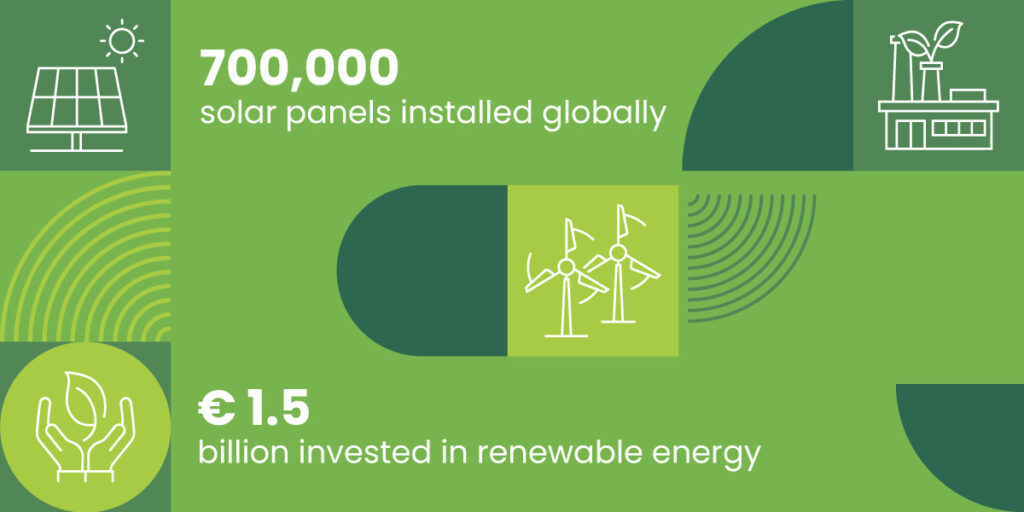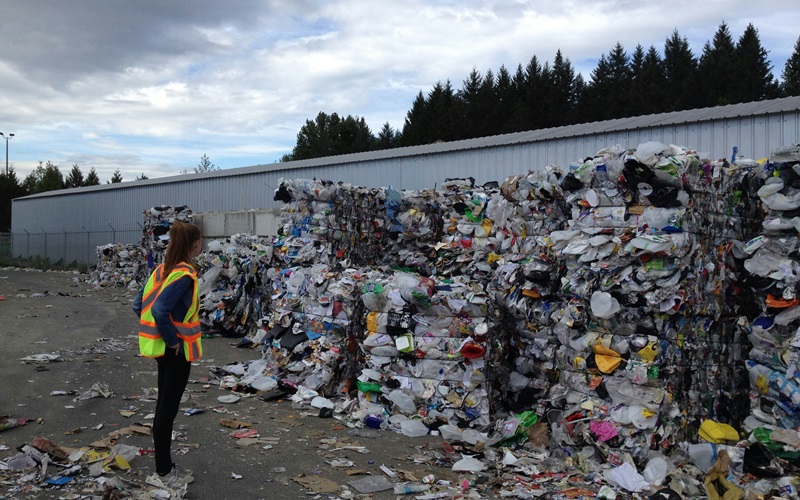2023 has been a challenging year, from the highest recorded global temperature to the ongoing effects of climate change, inflation, geopolitical conflicts, and increased loss of natural resources. Despite these hurdles, IKEA’s sustainability journey remains consistent. Celebrating its 80th anniversary in 2023, founded by Ingvar Kamprad in 1943, IKEA continues to lead in sustainable practices.

In 2023, the company made strides towards energy independence with its measures to address climate change and positively impact the environment. With over 700,000 solar panels installed globally and €1.5 billion invested in renewable energy, IKEA is on track to meet its sustainability goals.
IKEA: An Overview
The IKEA franchise system encompasses a vast network of 231,000 co-workers as of FY22, 800 home furnishings suppliers in over 50 markets, and more than 150 global food suppliers. In FY23, IKEA launched over 1600 new products, continually innovating and expanding its offerings.
Sustainable Living
IKEA is focusing on three main opportunities: becoming more affordable, more accessible and more sustainable. This may actively contribute to limiting climate change and reversing natural loss.
In the financial year 2023, the stores welcomed 860 million visitors, and sales amounted to €47.6 billion, a 6.6% increase from FY22. Online and offline sales continue to grow in value despite the continued challenge of lower sales quantities.
Renewable Energy
In FY23, IKEA achieved a significant milestone in reducing its carbon footprint, largely through the increased use of renewable electricity in retail and production operations. This effort led to a 12% reduction in the company’s climate footprint for the year, bringing the total emissions down to 24.1 million tonnes of CO2 eq.
The reduction was due mainly to:
- Boosting renewable electricity use: Both retail stores and production facilities saw an increase in the share of renewable electricity, which played a crucial role in lowering emissions.
- Energy efficiency Improvements: Upgrading energy efficiency, particularly in the lighting range, contributed to the reduction.
- Lower production volumes: A decrease in production volume due to overstock situations and economic pressures also reduced overall emissions.
Circular Economy and Climate
For the circulatory agenda, they are using more recycled materials to reduce their carbon footprint further. While some materials, like ceramics, are challenging to recycle, IKEA continues to innovate and find solutions:
- They incorporate 30% recycled content in particleboard – a significant increase from the previous 0.3% from their fibreboard.
- New technology has enabled the use of over 50% recycled wood in fibreboard production, setting a new standard in sustainable manufacturing.
- The SILVERSIDA product series features tableware manufactured from 65%-70% ceramic production waste.

Climate Goals and Sustainability Initiatives
This year’s significant achievement was developing rigorous action plans, which allowed them to strengthen their climate goals in line with the 1.5 C target and the Science Based Targets Initiative (SBTi) Net-Zero standard.
- IKEA has set new goals to halve greenhouse gas emissions by FY30 compared to FY16 and aims for a 90% reduction by FY50. Any remaining emissions will be neutralised within the IKEA value without using carbon offsets – to reach net zero emissions.
- Innovating further, IKEA has introduced bio-based glue in its Kazly Ruda factory in Lithuania, aiming to reduce the carbon footprint by 30% by FY30. As glue in board material represents 5% of IKEA’s total climate footprint, this move significantly impacts overall emissions.
- IKEA has more than halved emissions from product use at home compared to FY16, resulting in an estimated 4 million tonnes CO2 eq reduction over the lifespan of products sold in FY23.
- The share of renewable electricity in production increased from 63% in FY22 to 71% in FY23, with significant gains in India, China and Vietnam.
- The share of renewable energy in IKEA retail operations rose from 63% in FY22 to 69% in FY23, with renewable electricity increasing from 75% to 77%.
- The implementation of the Five Main Fractions methodology strengthens the company’s reduction of waste management. In this approach, production units analyse their waste and focus on five main types: the largest volume, the most hazardous, mixed fractions, the most expensive and those destined for landfill. In FY23, nine out of 21 units successfully achieved the no-waste-to-landfill target, showcasing tangible progress in living with zero waste.
- IKEA aims to eliminate single-use plastic in consumer packaging by 2028 and introduce all new home furnishing without plastic packaging by 2025. By prioritising paper and fibre-based alternatives, IKEA has successfully reduced plastic packaging for consumer goods by 47% and total packaging by approximately 44% compared to FY21.
- They launched the global first wood supply map, enhancing transparency by publicly sharing the origin of the woods used in their products. This bold move set a new benchmark for accountability in sourcing.
- IKEA continues to lead efforts to halt deforestation and promote responsible sourcing, guided by the Science Based Targets Network (SBTN). During FY23, the IKEA business and WWF expanded their long-standing partnership to Brazil and Columbia, focusing on community forest management, landscape conservation, and recovery activities. A new pilot project on landscape restoration was also initiated in Thailand.
- Preparing for the Corporate Sustainability Reporting Directive (CSRD) by 2026, IKEA conducted a comprehensive double materiality assessment in FY23, ensuring they stay ahead of global and EU sustainability requirements.
Additionally, an ongoing assessment to identify and close gaps in reporting under the European Sustainability Reporting Standards (ESRS) has been initiated.
IKEA’s holistic sustainability approach, which spans renewable energy adoption, circular material strategies, and transport sourcing practices, underscores its strong environmental commitment. IKEA mitigates its ecological footprint through ambitious climate targets and champions global sustainability efforts. It is a shining example of how businesses can drive positive change towards a greener, more resilient future.
Source
IKEA Sustainability Report FY23
IKEA Climate Report FY23



